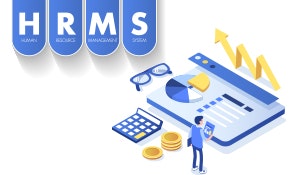In essence, an HRMS is built to streamline the management of several HR functions using information technology. While its sole aim is to improve the productivity and efficiency of any business through the automation of manual and repetitive tasks, not all tools can live up to their promises. An inefficient tool can prove detrimental to employees' experiences. That said, here are eight things your employees hate about the HRMS you use:
1. The Complex UI
Regardless of how technology-savvy a company is, its internal HRMS platform usually appears to be a patchwork of a bunch of basic tools. Such a platform is complex to navigate, and its UI is highly rigid and sluggish. Instead of being a tool to drive engagement, an HRMS with an inferior user interface can ironically affect adoption and usability.
2. Poor Performance Insights
Most HRMS tools offer a standard set of generic features not tied to a specific organization's goals and objectives. Such an out-of-the-box platform is not adept at meeting the needs and expectations of different types of employees. The limited personalization options lead to poor performance insights, impacting efficiency in the long run.
3. Limited Self-Service Options
Today's empowered employee wants to get answers to pressing questions instantly without having to fall back on a support executive. However, most HRMS solutions have limited self-service options. This restricts employees' ability to solve their problems, ultimately impacting their spirits and efficiency.
4. Frequent Outages
Engaged employees are productive employees. However, driving engagement is impossible when the company's HRMS platform is frequently down. With limited access to payroll management and leave and attendance management, organizations often find it difficult to keep employees engaged and build and maintain a productive workforce.
5. Inconsistent Communication
One of the essential functions of any HRMS software is to enable and ensure a regular communication channel between the organization and its employees. But this is generally not the case. Often, employees get little or no updates on policy changes and new rules and regulations. When such information is not easily communicated or made available, it tends to impact employee productivity while also affecting their morale and their trust and confidence in the organization.
6. Poor Security
Many employees also worry about the security and privacy of their personal and sensitive information stored in the HRMS. Any data breach or unauthorized access can lead to distrust in the system and the organization as a whole.
7. Mobile Incompatibility
The smartphone has become a way of life for human beings. Limited accessibility of the HRMS tool via mobile devices is a major cause of frustration. If the HRMS has compatibility issues with specific browsers or operating systems, employees may find it challenging to carry out important HR tasks on the go.
8. Unresolved Bugs
Like any software, HRMS platforms are vulnerable to technical issues. The frequent occurrence of bugs can cause employees to become irritated, especially if they result in errors with their payroll, benefits, or other HR-related matters.
The Benefits of a Modern Solution
If you want to bring simplicity, speed, and efficiency to your HR functions and deliver a world-class employee experience, you need to invest in a state-of-the-art HRMS platform. A modern solution can help get operational HR out of the way, allowing your HR teams to make time for high-value work. Here's how the capabilities of a modern HRMS platform benefit everyone:
● A centralized employee database can eliminate inconsistencies, duplication, and clutter in employee information. This can help maintain a single source of truth for employees and HR teams, ultimately enhancing both productivity and decision-making.
● Advanced employee self-service capabilities can make all critical employee-relate information available from one central hub. Giving employees access to all their payroll, leave, and attendance data can enable them to view/download their payslips, monitor leaves and real-time attendance data, and keep a tab on their tax liabilities without the need to approach HR.
● Continuous omnichannel policy and HR updates offered via the HR portal, social media handles, and mobile apps can foster a sense of belonging, encourage teamwork, and boost productivity. Personalized dashboards and reports can enable employees to get specific insights into their activities and take more responsible actions.
● AI-enabled chatbot capabilities can ensure all queries and grievances are handled promptly and professionally. Quick and accurate solutions to common employee queries can foster accountability and enhance employee satisfaction.
● Easy integrations with leading HR tools and apps can enable a seamless data flow between different HR functions such as leave, attendance, and payroll. This can ensure the availability of up-to-date information for employees and managers alike.
● Automated attendance management features can enable smooth operations and improve productivity. Employees can enjoy more transparency and consistency in policies and better track their attendance. Besides, GPS-based geo-sensing capabilities can ensure attendance is automatically marked as employees enter the premises, without them having to swipe their cards or register their fingerprints.
● A modern and intuitive UI can play a significant role in boosting the effectiveness of the HRMS platform. Not only can it simplify the user experience, but it can also minimize risks and maximize productivity.
The Bottom Line
Driving high levels of employee engagement and satisfaction might seem like an impossible task in today's hybrid workplace era. But with the right HRMS in place, this is easily achievable. A modern solution can streamline and automate complex and repetitive HR functions that are otherwise chaotic and long-drawn. It can help overcome the many challenges and complaints employees have with traditional HRMS and pave the way for higher loyalty and retention.








